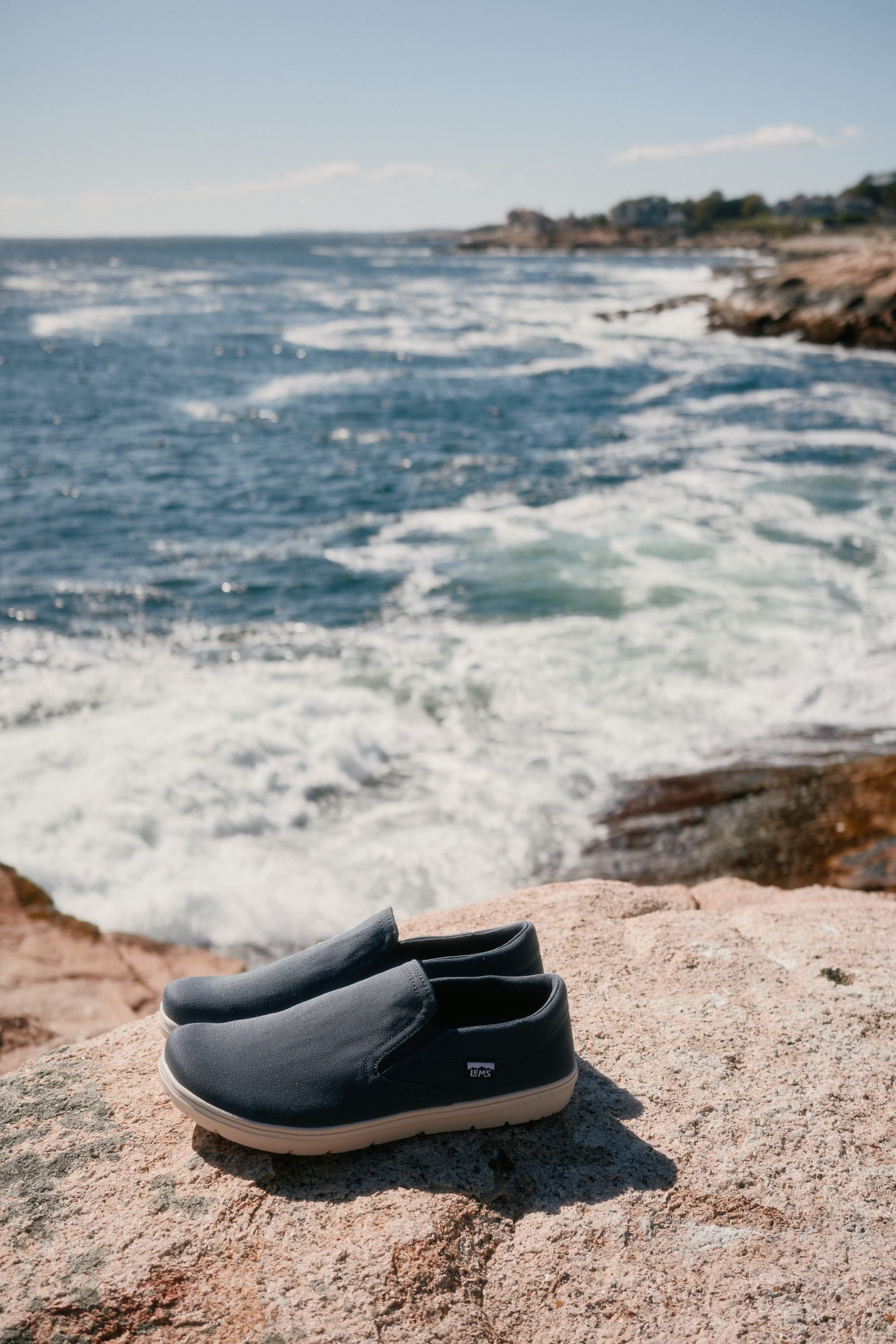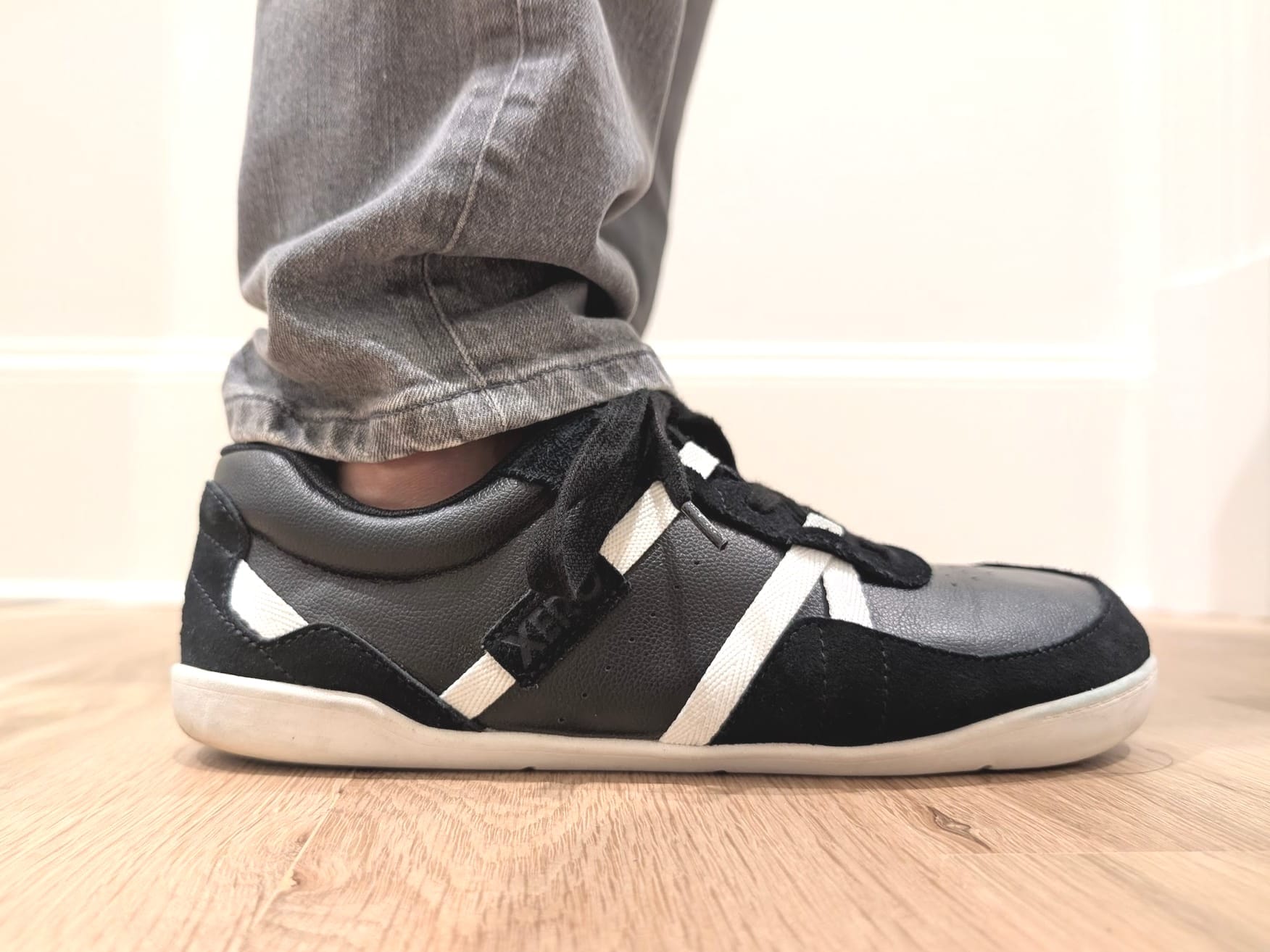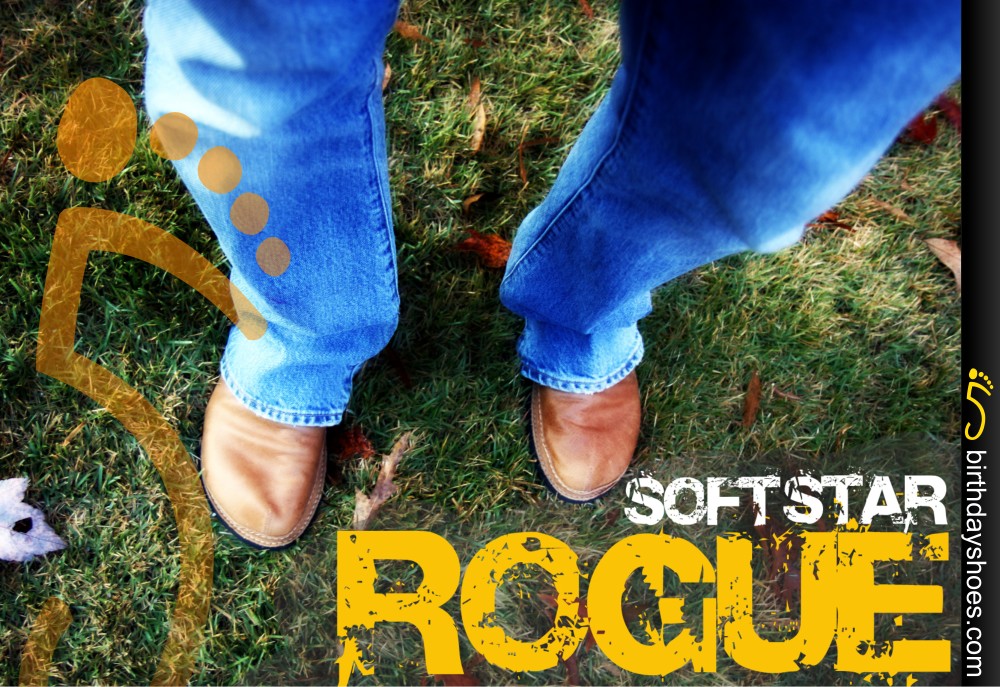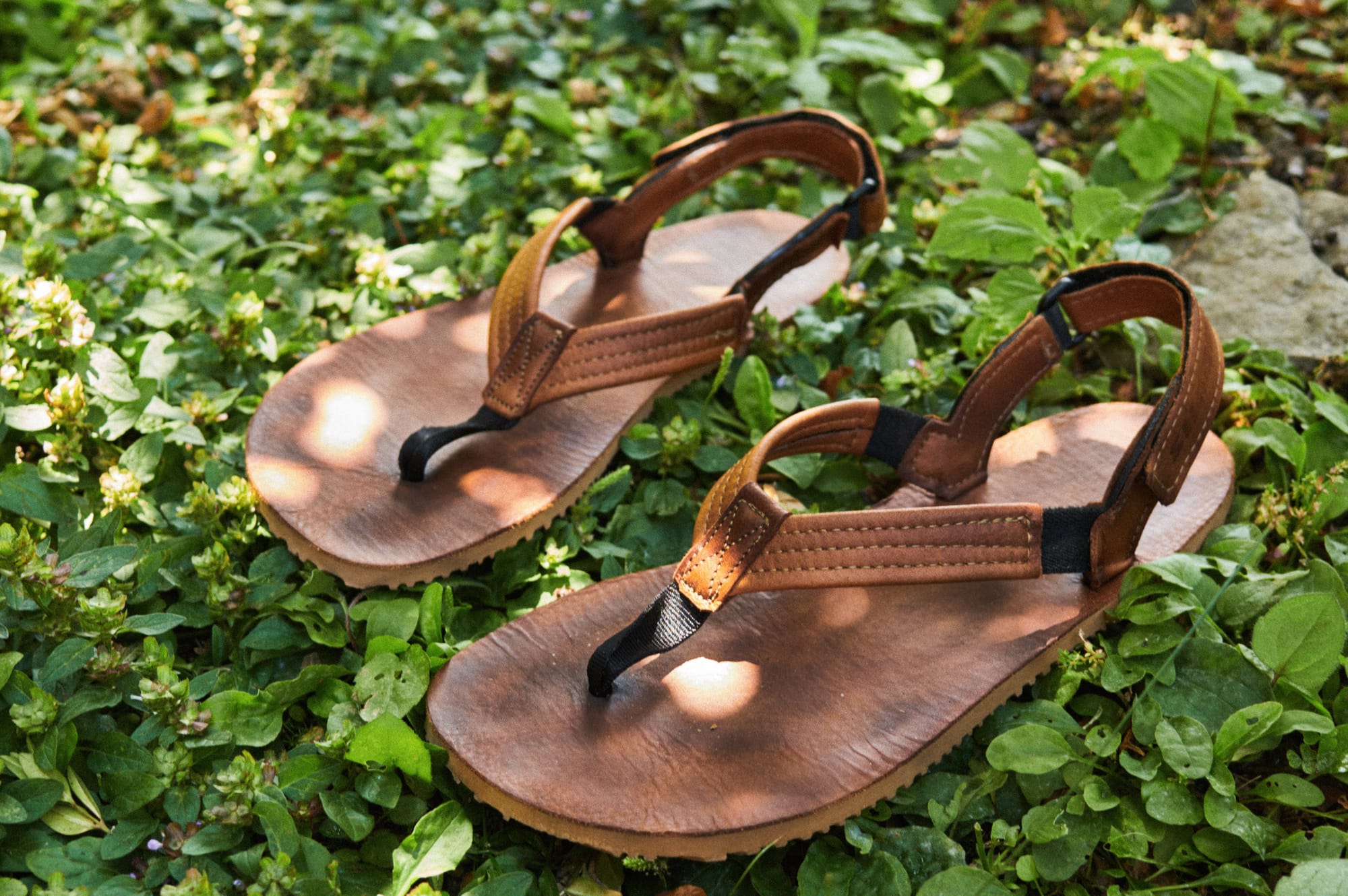Gladsoles Original and Trail Huaraches Review
The Gladsoles Original and Trail running sandals are lightweight, very comfortable, and versatile huaraches that can pretty much handle anything you throw at them. Custom-made from tracings of your foot and made in the USA, they are what I consider to…
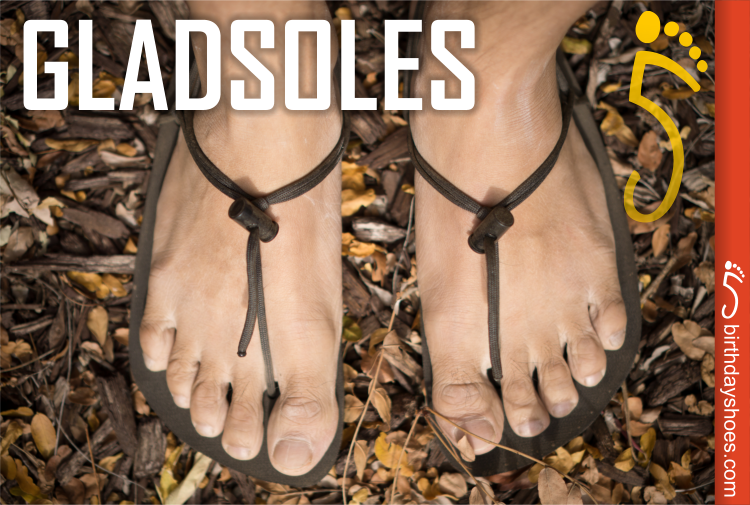
The Gladsoles Original and Trail running sandals are lightweight, very comfortable, and versatile huaraches that can pretty much handle anything you throw at them. Custom-made from tracings of your foot and made in the USA, they are what I consider to be the very best self-tied running sandals currently on the market. If you are a minimalist or barefoot enthusiast, you have to check them out!
About Gladsoles and their Huaraches Sandals
Gladsoles is a family-owned company based in New Jersey. They use Vibram soles (Morflex and Newflex) for all of their sandals and currently offer three flavors of huaraches: (1) The Original Gladsole with a 6mm Morflex sole, (2) The Trail with an 8mm Newflex Sole, and (3) a Lite model with a 4mm Newflex sole (not reviewed today).
Pros
- Lightweight (2.3 oz!)
- Custom-made from your own foot tracings
- Great Vibram durability
- Good in wet conditions
- Hand-made in the USA
- Excellent flexibility
- Tying process allows for customized strapping
- Easy-on, Easy-off with a spring-loaded locking mechanism
- Comes in many colors! (I requested jet black)
Cons
- Tying can be tricky at first
- May require retying if left in a bag for too long
Barefoot Scale — Perfect for barefoot purists and enthusiasts
Testing Background — This review was written after running 200 miles on the Gladsoles Original and 30 trail miles with the Gladsoles Trail.
Running with the Gladsoles Original was mixed with city and light trail running. I also ran with them on every rainy day I could find to assess their capabilities in wet conditions
The Gladsoles Trail was tested in Colorado up and down Pikes Peak over a very beautiful weekend visiting my good friends in Colorado Springs.
Aside from the type of Vibram sole used, the Original and the Trail are identical sandals, so I will cover the identical aspects before going into the individual traits of each sandal. Here's a look at the huaraches by way of photos!
The Tying System
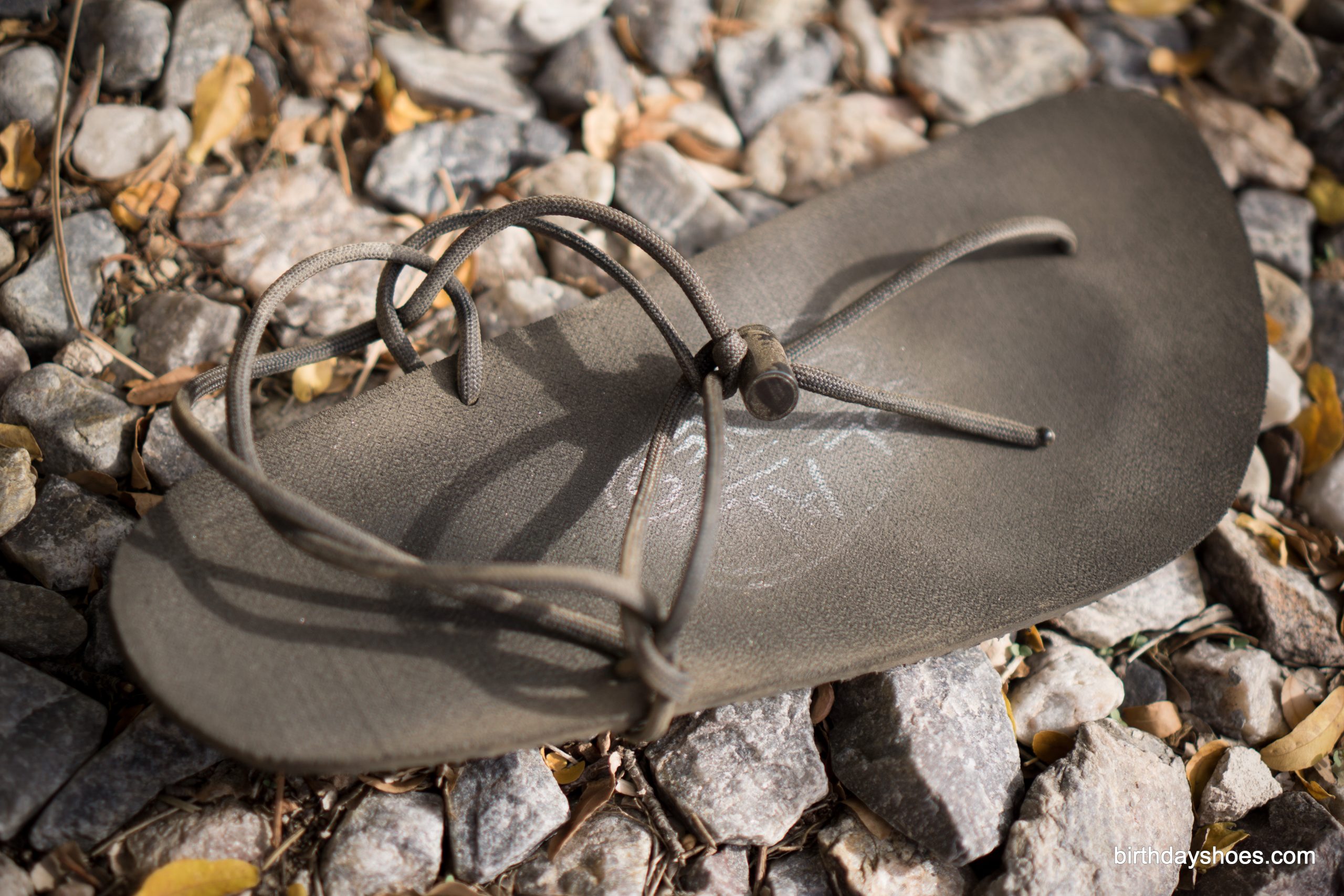
Gladsoles are tied with military strength paracord laces and squeeze lock system keep everything in place. The laces are very strong, durable, and soft on my skin. When tied properly, you barely even notice them on your feet as you run. It’s a very interesting feeling, like the entire world has been covered with a thin layer of vibram and you are a barefoot mountain man (or woman).
The tying system/procedure is a Gladsole design and is similar to many other hand-tied huaraches (See other huaraches sandals reviews here). After experimenting with many different tying patterns, Gladsoles decided on a system that they deemed best for simplicity, stability, and comfort. There are very detailed instructions and pictures of the tying process on Gladsole’s website and it only takes a couple of attempts to memorize the entire process.
The tying process involves looping the paracord around both sides of your ankle, heel, and around itself, twice over. This process creates a strong and secure tie that maintains its tension while running. The heel is especially stable and does not slip when tied properly. The entire system eventually evens out its tension across the entire foot, so even if you tie it a little tightly in some areas, pressure relieved after a few steps.
The beauty of this tying system is that it allows for customized fit, tension, and security across the entire sandal. Unlike other huaraches that are pre-tied, you have to fit the self-tied paracord to your own feet in order for everything to work. Much like how the vibram sole is custom cut to fit your foot, the tying system is also made just for your individual foot.
Overall, the tying system does require a little trial and error to learn, but once you get it right, there is no substitute for the combination of custom sole and custom ties.
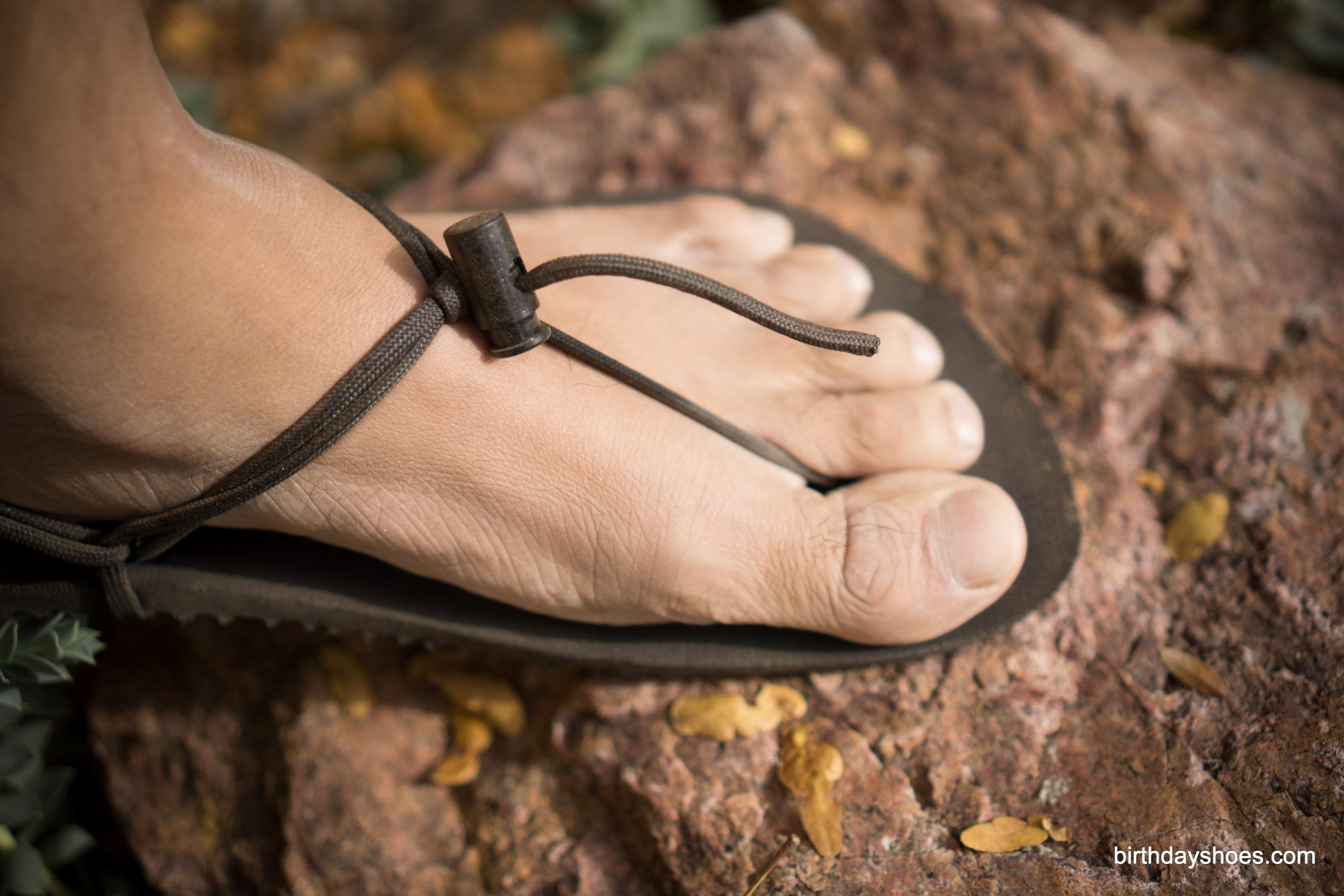
The locking mechanism on each sandal allows for you to dial in the fit and then keep everything tied together so you can easily slip on and slip off the sandals. I have found that the straps can get tangled up a bit if kept in a gym bag for too long and I would end up retying them, but after tying them for a few days, it became second nature. I even started retying them every time I went out for a run because it has become so ingrained in my muscle memory, just like tying a regular shoe!
All Gladsoles are shipped in a nice hemp bag with extra paracord and lots of slack. Once you have tied everything correctly a couple of times and are sure of the fit, you can simply cut the excess cord with scissors and seal it with a match or lighter.
The Custom Fitting Process
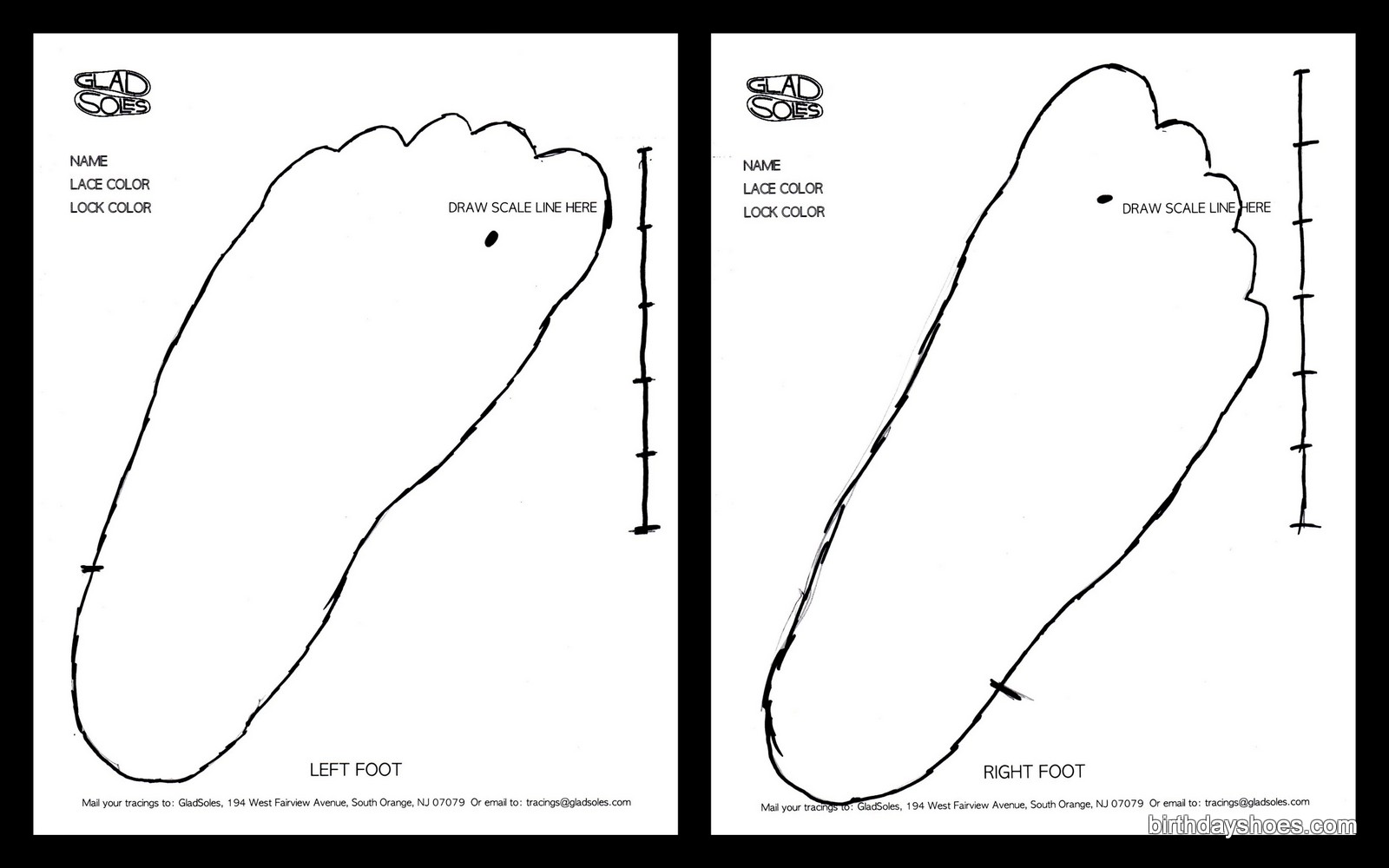
Each Gladsole is custom cut to the foot of the user. I simply traced my foot on two pieces of paper (templates are provided on Gladsole’s website) and etched some ruler makes to serve as a scale. After that, I marked where my toe strap would be between my big and index toe, emailed it to Gladsoles and it was off to the presses! As an alternative, you can also mail them your tracings.
As you can see from my tracings, I have VERY wide, duck-like feet. Because of the shape of my feet, the fitting process of running shoes and all footwear in general has always been a difficult process. As a child, my parents would actually purchase shoes a few sizes larger than what I should have been wearing because larger shoe sizes are also made wider to accommodate the shape of a normal foot.
I was extremely happy with the end result of the custom soles that Gladsoles made for me. The sandal IS my foot! And it feels great! There is no excess material, no sections that are too narrow, it’s just my foot and there can be no greater compliment that can be given for a running shoe.
The Soles (and Gladsoles Original vs. Trail)
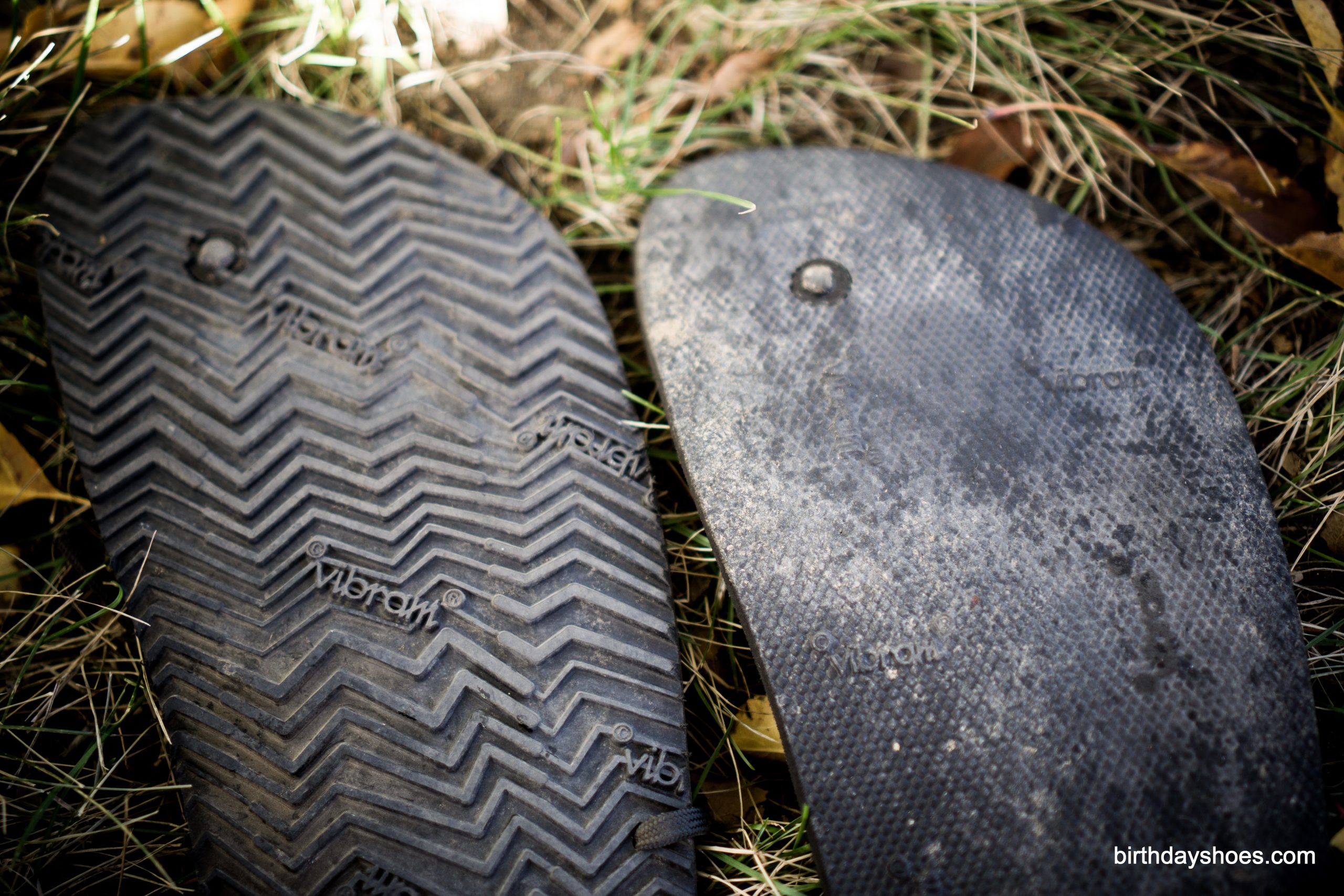
Gladsoles use two different materials for their current lineup of sandals, both of which are made by Vibram. The Original use a Vibram Morflex Sole and The Trail and Lite use a Vibram Newflex Sole.
Morflex is a micro-cellular sole, with one third the weight of rubber, but excellent resilience and a little bounce. The material can be equated to a very dense neoprene, slightly squishy and conforms easily to the shape of your foot. With the Original, the sole has good grip and durability, even in wet conditions.
Newflex is a great sole material for trail running because it has excellent slip resistance and durability. It has the greatest durability and grip among the two and is denser than Morflex and has very aggressive treading for clamoring over rocks, cliffs, and slippery stuff.
Both the Original’s Morflex sole and the Trail’s Newflex sole are great for running. They are very flexible and extremely light weight.
With my custom-made soles, the Originals weight 2.3 oz and the Trails weigh 2.8 oz, easily the lightest running shoes currently in my collection. The low weight of the sandal, coupled with the custom tying mechanism, allows for effortless running and everything feels invisible on my foot—I barely even notice them when I run.
After running in these, anything else feels heavy and claustrophobic, by comparison.
Running in the Gladsoles Original and Gladsole Trail is freeing. There is nothing quite like having so little “shoe” and more “you” with every step.
The Original is the more streamlined of the two, while the Trail is thicker and denser. The thinner material (6mm compared to 8mm) and the Morflex sole makes the Original great for road running and light trails, but if you encounter anything sharp, you will feel it. The Trails, on the other hand, are still very thin, but a little more forgiving because of the extra thickness and density of the Newflex sole.
Regardless, both soles offer excellent ground feel. Textures easily transfer over from the ground to your foot and you have to be mindful of your step, while being one with the trail or road.
I've taken both on multiple stormy day runs and after splashing around like a kid, I can say that these sandals are the best for rainy days. The naked Vibram footbeds stick to my foot well and because I’m basically barefoot, I never care about getting my sandals wet. While everyone else may baby their running shoes from dirt and puddles, I happily stomp and enjoy every shower. I've even jumped off a footbridge and swam to shore with the sandals still on my feet on one occasion.
As a side note: Gladsoles cleverly cuts their sandals at an angle (see this photo) so that the sole is less likely to catch the ground and and fold over during normal running. Many sandal makers cut their soles at a 90 degree angle and that can catch on the ground, especially if the sandal is not custom fitted to the user. Gladsoles, on the other hand, cuts closer to at a 60 degree and I have never experienced any catching or tripping as a result. A nice touch.
Slapping
As many minimalist runners have noticed, huaraches sometimes exhibit a "slapping" sound as you run. Provided you tied your sandals properly, this should be indicative of poor running form—and should be corrected!
Landing your feet below your center of gravity, with your feet directly under your hips, directly under your shoulders, having a high cadence, and a “flow” to your run all greatly enhances the “silence” of running with huaraches. In fact, I believe everyone should at least train with running sandals to keep their running form in check. It can be very easy to fall into a cycle of laziness and poor form. The more “shoe” you have, the more your poor form can be masked. However, with running sandals, you have to have good form just to run in the darn things!
Durability
Gladsole sandals have excellent durability with their Vibram soles. Because they lack a footbed (just the naked Vibram material), there is no leather or any other topper to wear out. After 200 miles with the Original in mixed terrain and 30 miles of mountain trails with the Trail, they still look good as new and I expect them to probably last for many years of punishment and enjoyment. Rocks, gravel, sand, and asphalt do not phase the Vibram soles in the slightest.
After my time with them, my footprint has started to develop and they have curved a tiny bit and that’s a good thing. As I use them more and more, they become more and more my feet and that’s after having already been custom cut to the shape of my foot and custom tied to my liking!
Conclusion
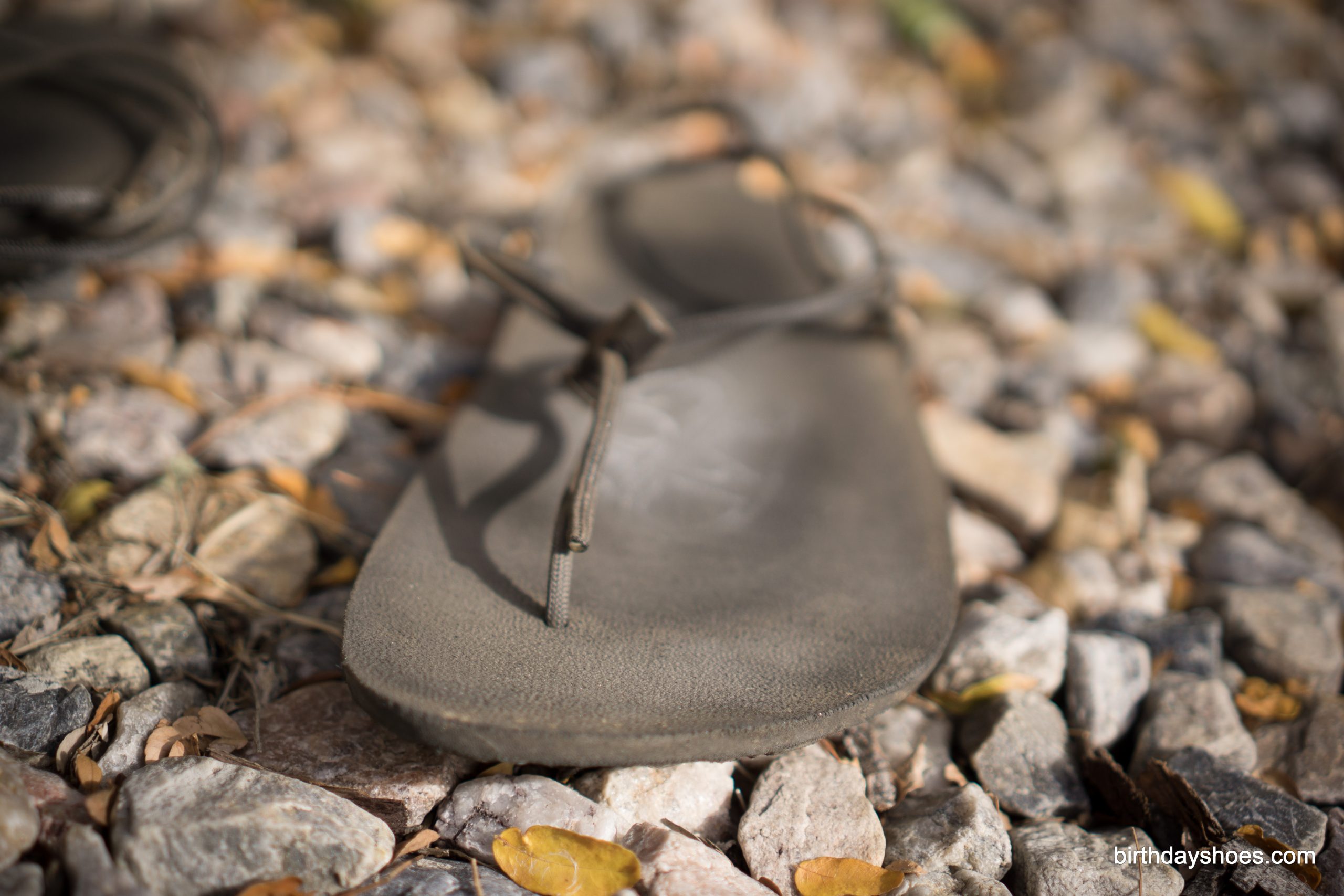
I believe that some people like to have a solution that has already been chosen for them. “Buy these shoes for overpronation,” “This gel is so advanced that you can sleep on it,” or whatever.
In the end, I truly believe that the solution is you.
You were born with perfect feet and you can find your own perfect way to run.
The less shoe you have, the more you shine and Gladsoles are a perfect representation of that fact.
These sandals are you. They are custom made to your foot, they are tied to best fit your foot, and over time, they become even more like your foot. These sandals are a celebration of the idea that you are all you need. While it may be hard to let go of the notion that you need to find a solution in your footwear outside of yourself, the solution may have been under your nose the entire time.
Gladsoles are truly fantastic and I encourage everyone to give them a try. There is nothing quite like the feeling of your feet underneath your legs.
There is a bit of a learning curve in learning how to tie them and you’ll never stop laughing at people’s funny looks at your feet when you are running in public, but there is no other sandal that I have reviewed that does so much with so little—and that’s a good thing.
If you're interested in checking them out, head over to the Gladsoles website!
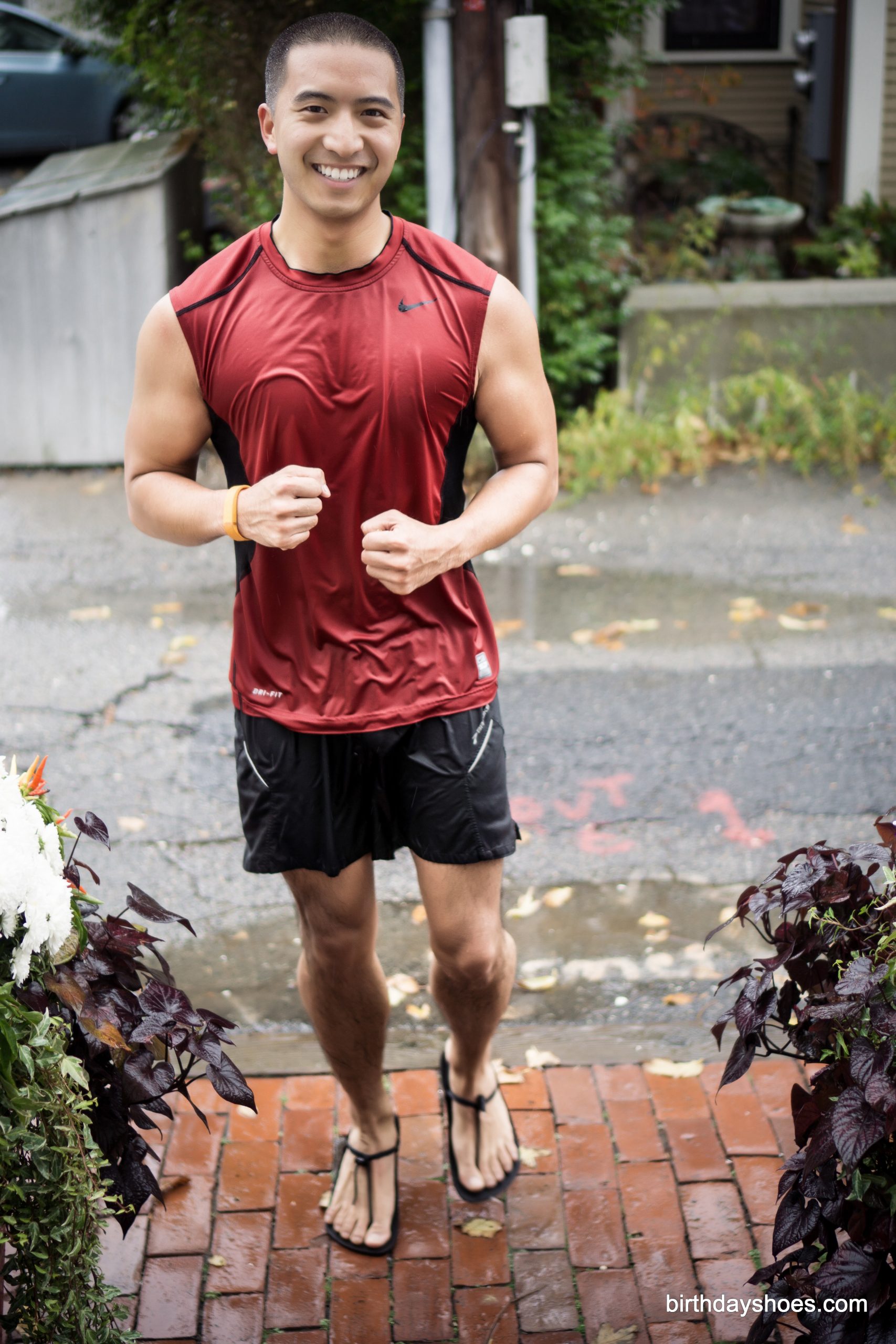
A huge thanks goes out to Gladsoles for sending me both the Original and Trail for review. I actually chatted on the phone with them for a couple of hours when I approached them about the review and they are all extremely nice folks that are dedicated to sharing their love of running with others.

